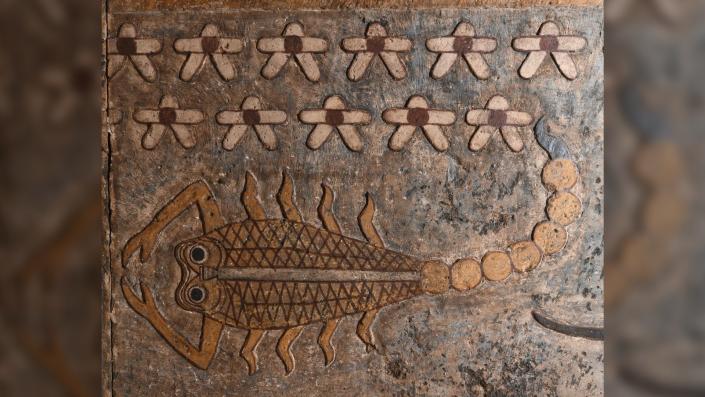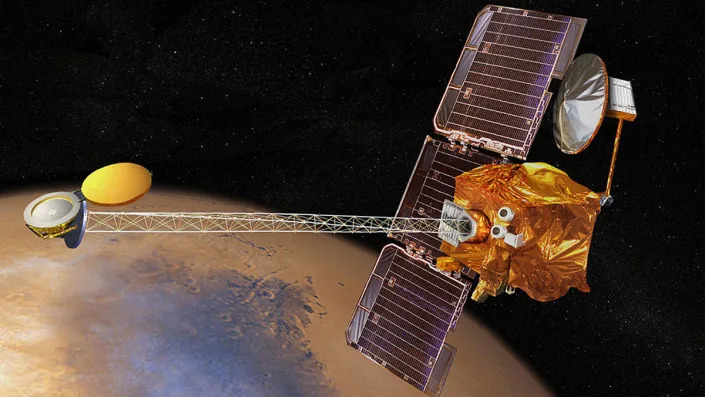ABOLISH THE DEATH PENALTY
Biden's Justice Dept. keeps hard line in death row cases
This photo provided by Taylor Legal Team shows Rejon Taylor. Taylor hoped the election of Joe Biden, the first U.S. president to campaign on a pledge to end the death penalty, would mean a more sympathetic look at his claims that racial bias and other trial errors landed him on federal death row in Terre Haute, Ind. But two years on, Justice Department attorneys under Biden are fighting the Black man's efforts to reverse his 2008 death sentence for killing a white restaurateur as hard as they did under Donald Trump, who oversaw 13 executions in his presidency's final months.
(Taylor Legal Team via AP)
MICHAEL TARM and ALANNA DURKIN RICHER
Sun, March 26, 2023
CHICAGO (AP) — Rejon Taylor hoped the election of Joe Biden, the first U.S. president to campaign on a pledge to end the death penalty, would mean a more sympathetic look at his claims that racial bias and other trial errors landed him on federal death row in Terre Haute, Indiana.
But two years on, Justice Department attorneys under Biden are fighting the Black man's efforts to reverse his 2008 death sentence for killing a white restaurateur as hard as they did under Donald Trump, who oversaw 13 executions in his presidency's final months.
“Every legal means they have available they’re using to fight us,” said the 38-year-old's lawyer, Kelley Henry. “It’s business as usual.”
Death penalty opponents expected Biden to act within weeks of taking office to fulfill his 2020 campaign promise to end capital punishment on the federal level and to work at ending it in states that still carry out executions. Instead, Biden has taken no steps toward fulfilling that promise.
But it's not just inaction by Biden. An Associated Press review of dozens of legal filings shows Biden’s Justice Department is fighting vigorously in courts to maintain the sentences of death row inmates, even after Attorney General Merrick Garland temporarily paused executions. Lawyers for some of the over 40 death row inmates say they've seen no meaningful changes to the Justice Department's approach under Biden and Trump.
“They’re fighting back as much as they ever have,” said Ruth Friedman, head of the defender unit that oversees federal death row cases. “If you say my client has an intellectual disability, the government ... says, ‘No, he does not.’ If you say ‘I’d like (new evidence),’ they say, ‘You aren’t entitled to it.’”
Administration efforts to uphold death sentences for white supremacist Dylann Roof, who killed nine Black church-goers, and Boston Marathon bomber Dzhokhar Tsarnaev are better known. Lower-profile cases, like Taylor’s, have drawn less scrutiny.
The Justice Department confirmed that since Biden’s inauguration it hasn't agreed with a single claim of racial bias or errors that could lead to the overturning of a federal death sentence.
It's a thorny political issue. While Americans increasingly oppose capital punishment, it is deeply entrenched. And as Biden eyes a 2024 run, it's unlikely he'll make capital punishment a signature issue given his silence on it as president.
In announcing the 2021 moratorium, Garland noted concerns about how capital punishment disproportionately impacts people of color and the “arbitrariness” — or lack of consistency — in its application. He hasn’t authorized a single new death penalty case and has reversed decisions by previous administrations to seek it in 27 cases.
Garland recently decided not to pursue death for Patrick Crusius, who killed nearly two dozen people in a racist attack at a Texas Walmart. His lawyers have said he had “severe, lifelong neurological and mental disabilities.” He could still be sentenced to death under state charges.
Garland also took the death penalty off the table for a man accused in 11 killings as part of a drug trafficking ring.
Defense lawyers say that makes it all the more jarring that Garland’s department is fighting to uphold some death sentences. In one case, Norris Holder was sentenced to death for a two-man bank robbery during which a security guard died, even though prosecutors said Holder may not have fired the fatal shot.
Prosecutors decide before trial whether or not to seek the death penalty, and current death row inmates were all tried under previous administrations. Prosecutors have less leeway after a jury's verdict than before trial.
Court challenges after trials are also often not about whether it was appropriate to pursue the death penalty, but whether there were legal or procedural problems at trial that make the sentence invalid.
“It’s a very different analysis when a conviction has been entered, a jury has spoken," said Nathan Williams, a former Justice Department lawyer who prosecuted Roof. "There has to be a respect for the appellate process and the legal approaches that can be taken."
A Justice Department spokesman said prosecutors “have an obligation to enforce the law, including by defending lawfully obtained jury verdicts on appeal.” The department is working to ensure “fair and even-handed administration of the law in capital-eligible cases," he said.
Inmate lawyers dispute that prosecutors have no choice but to dig in their heels, saying multiple mechanisms have always existed for them to fix past errors.
Justice officials announced this month that they wouldn't pursue death in the resentencing of Alfonso Rodriguez Jr., convicted of killing North Dakota student Dru Sjodin. But that only happened after a judge vacated the original death sentence.
Notably in 2021, the department agreed with lawyers for Wesley Coonce, sentenced to death for killing a fellow inmate in a mental health unit, that lower courts should look again at intellectual disability questions in his case. But the Supreme Court disagreed, declining to hear his case or remand it to lower courts.

Seven federal defendants are still facing possible death sentences.
The first federal death penalty case tried under Biden ended this month. The jury was divided, meaning the life of Sayfullo Saipov, who killed eight people in a terrorist attack on a New York bike path, will be spared. Trump made the decision to seek death and Garland allowed the case to move forward.
Garland's criteria for letting some capital cases proceed isn't clear, though the department often consults victims' families. Some feel strongly that suspected or convicted killers should face death.
Inmate attorneys have asked for all capital cases to get a fresh look. Garland has appeared to take one step in that direction.
The department this year restored written guidance emphasizing that staff can be proactive in fixing egregious errors in capital cases, though none has invoked that option. Garland also re-set processes in which capital defendants can, in certain circumstances, ask the department to consent to their bids for relief.
Taylor was charged with killing restaurant owner Guy Luck in 2003. His lawyers say the 18 year old “discharged his gun in a panic” as Luck tried to grab a gun inside a van in Tennessee.
The prosecution described Taylor to his almost entirely white jury as a “wolf” whom they had an “obligation” to kill. An alternate later said some jurors were determined to get Taylor, recalling: “It was like, here’s this little Black boy. Let’s send him to the chair.”
An appeals court rejected Taylor’s bias claims in 2016, though a dissenting judge said courts must be especially diligent to guard against bias when a defendant is Black and the victim white. She also said Taylor didn't seem to be among the worst of the worst, for whom death sentences are reserved.
Taylor revived the bias claims, though the department hasn't directly addressed them. It has rejected many of his separate claims.
As the 2024 election looms — and with the chance of someone even less sympathetic to their claims entering the Oval Office — death row inmates know the clock is ticking.
“Trump ran out of time during his killing spree,” Taylor told the AP via a prison email system. If elected again, “I don’t think he’d waste any time in continuing where he’d left off.”
___
Richer reported from Boston. Associated Press reporter Colleen Long in Washington contributed.
MICHAEL TARM and ALANNA DURKIN RICHER
Sun, March 26, 2023
CHICAGO (AP) — Rejon Taylor hoped the election of Joe Biden, the first U.S. president to campaign on a pledge to end the death penalty, would mean a more sympathetic look at his claims that racial bias and other trial errors landed him on federal death row in Terre Haute, Indiana.
But two years on, Justice Department attorneys under Biden are fighting the Black man's efforts to reverse his 2008 death sentence for killing a white restaurateur as hard as they did under Donald Trump, who oversaw 13 executions in his presidency's final months.
“Every legal means they have available they’re using to fight us,” said the 38-year-old's lawyer, Kelley Henry. “It’s business as usual.”
Death penalty opponents expected Biden to act within weeks of taking office to fulfill his 2020 campaign promise to end capital punishment on the federal level and to work at ending it in states that still carry out executions. Instead, Biden has taken no steps toward fulfilling that promise.
But it's not just inaction by Biden. An Associated Press review of dozens of legal filings shows Biden’s Justice Department is fighting vigorously in courts to maintain the sentences of death row inmates, even after Attorney General Merrick Garland temporarily paused executions. Lawyers for some of the over 40 death row inmates say they've seen no meaningful changes to the Justice Department's approach under Biden and Trump.
“They’re fighting back as much as they ever have,” said Ruth Friedman, head of the defender unit that oversees federal death row cases. “If you say my client has an intellectual disability, the government ... says, ‘No, he does not.’ If you say ‘I’d like (new evidence),’ they say, ‘You aren’t entitled to it.’”
Administration efforts to uphold death sentences for white supremacist Dylann Roof, who killed nine Black church-goers, and Boston Marathon bomber Dzhokhar Tsarnaev are better known. Lower-profile cases, like Taylor’s, have drawn less scrutiny.
The Justice Department confirmed that since Biden’s inauguration it hasn't agreed with a single claim of racial bias or errors that could lead to the overturning of a federal death sentence.
It's a thorny political issue. While Americans increasingly oppose capital punishment, it is deeply entrenched. And as Biden eyes a 2024 run, it's unlikely he'll make capital punishment a signature issue given his silence on it as president.
In announcing the 2021 moratorium, Garland noted concerns about how capital punishment disproportionately impacts people of color and the “arbitrariness” — or lack of consistency — in its application. He hasn’t authorized a single new death penalty case and has reversed decisions by previous administrations to seek it in 27 cases.
Garland recently decided not to pursue death for Patrick Crusius, who killed nearly two dozen people in a racist attack at a Texas Walmart. His lawyers have said he had “severe, lifelong neurological and mental disabilities.” He could still be sentenced to death under state charges.
Garland also took the death penalty off the table for a man accused in 11 killings as part of a drug trafficking ring.
Defense lawyers say that makes it all the more jarring that Garland’s department is fighting to uphold some death sentences. In one case, Norris Holder was sentenced to death for a two-man bank robbery during which a security guard died, even though prosecutors said Holder may not have fired the fatal shot.
Prosecutors decide before trial whether or not to seek the death penalty, and current death row inmates were all tried under previous administrations. Prosecutors have less leeway after a jury's verdict than before trial.
Court challenges after trials are also often not about whether it was appropriate to pursue the death penalty, but whether there were legal or procedural problems at trial that make the sentence invalid.
“It’s a very different analysis when a conviction has been entered, a jury has spoken," said Nathan Williams, a former Justice Department lawyer who prosecuted Roof. "There has to be a respect for the appellate process and the legal approaches that can be taken."
A Justice Department spokesman said prosecutors “have an obligation to enforce the law, including by defending lawfully obtained jury verdicts on appeal.” The department is working to ensure “fair and even-handed administration of the law in capital-eligible cases," he said.
Inmate lawyers dispute that prosecutors have no choice but to dig in their heels, saying multiple mechanisms have always existed for them to fix past errors.
Justice officials announced this month that they wouldn't pursue death in the resentencing of Alfonso Rodriguez Jr., convicted of killing North Dakota student Dru Sjodin. But that only happened after a judge vacated the original death sentence.
Notably in 2021, the department agreed with lawyers for Wesley Coonce, sentenced to death for killing a fellow inmate in a mental health unit, that lower courts should look again at intellectual disability questions in his case. But the Supreme Court disagreed, declining to hear his case or remand it to lower courts.

Seven federal defendants are still facing possible death sentences.
The first federal death penalty case tried under Biden ended this month. The jury was divided, meaning the life of Sayfullo Saipov, who killed eight people in a terrorist attack on a New York bike path, will be spared. Trump made the decision to seek death and Garland allowed the case to move forward.
Garland's criteria for letting some capital cases proceed isn't clear, though the department often consults victims' families. Some feel strongly that suspected or convicted killers should face death.
Inmate attorneys have asked for all capital cases to get a fresh look. Garland has appeared to take one step in that direction.
The department this year restored written guidance emphasizing that staff can be proactive in fixing egregious errors in capital cases, though none has invoked that option. Garland also re-set processes in which capital defendants can, in certain circumstances, ask the department to consent to their bids for relief.
Taylor was charged with killing restaurant owner Guy Luck in 2003. His lawyers say the 18 year old “discharged his gun in a panic” as Luck tried to grab a gun inside a van in Tennessee.
The prosecution described Taylor to his almost entirely white jury as a “wolf” whom they had an “obligation” to kill. An alternate later said some jurors were determined to get Taylor, recalling: “It was like, here’s this little Black boy. Let’s send him to the chair.”
An appeals court rejected Taylor’s bias claims in 2016, though a dissenting judge said courts must be especially diligent to guard against bias when a defendant is Black and the victim white. She also said Taylor didn't seem to be among the worst of the worst, for whom death sentences are reserved.
Taylor revived the bias claims, though the department hasn't directly addressed them. It has rejected many of his separate claims.
As the 2024 election looms — and with the chance of someone even less sympathetic to their claims entering the Oval Office — death row inmates know the clock is ticking.
“Trump ran out of time during his killing spree,” Taylor told the AP via a prison email system. If elected again, “I don’t think he’d waste any time in continuing where he’d left off.”
___
Richer reported from Boston. Associated Press reporter Colleen Long in Washington contributed.























